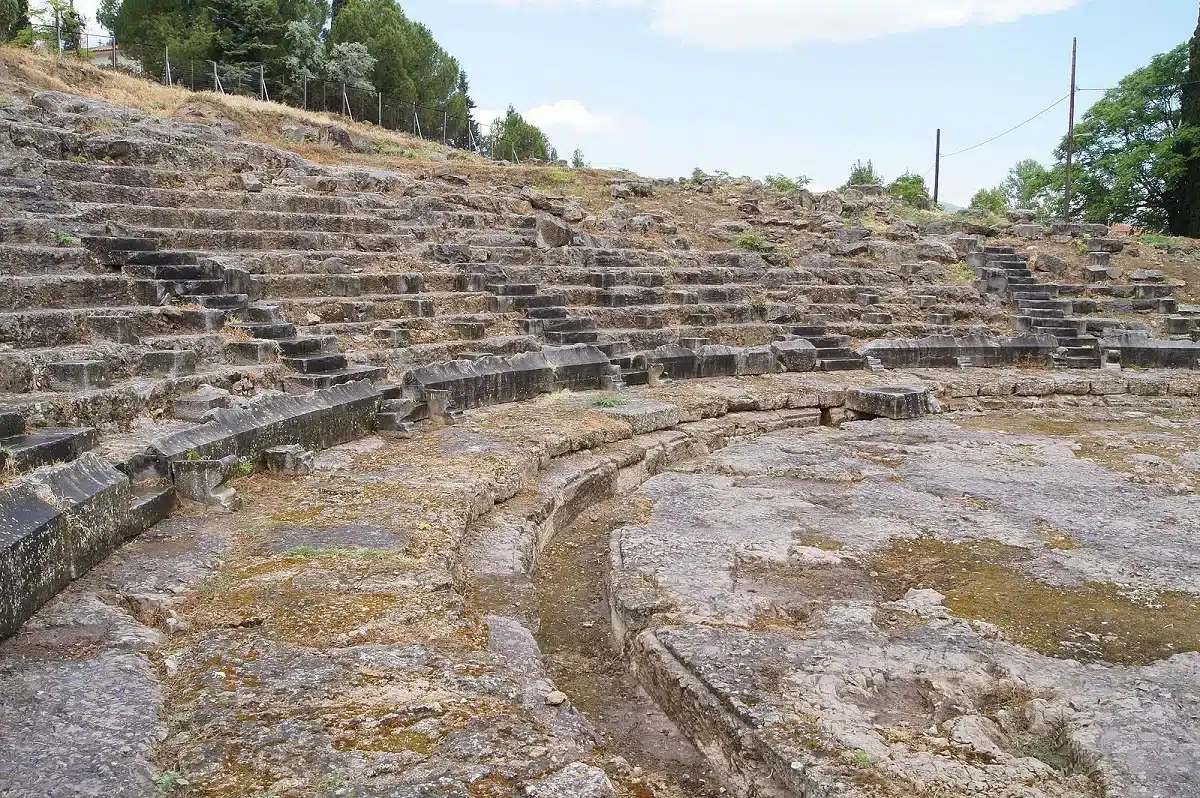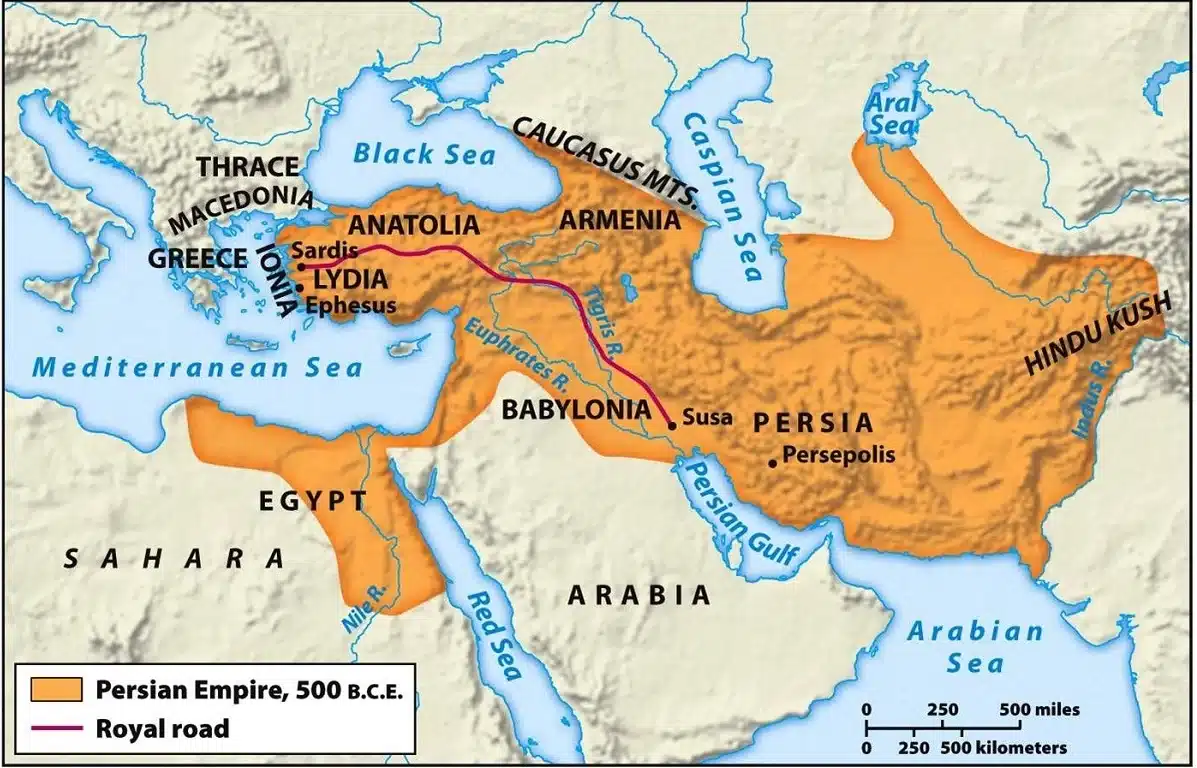Alabanda Ancient City is located within the borders of Çine district of Aydın province, in the Aegean Region of Turkey. Alabanda, one of the important cities of the ancient Caria region, attracts attention with its strategic location and rich history. This ancient city was an important trade and cultural center during the Hellenistic and Roman periods. Today, the ruins of Alabanda offer visitors the opportunity to discover the historical and cultural riches of the region.
Where is the Ancient City of Alabanda?
Geographical Location of Alabanda
The Region and Administrative Structure Where Alabanda is Located
Alabanda Ancient City is located within the borders of Çine district of Aydın province, in the Aegean Region of today’s Turkey. Alabanda, one of the important cities of the Caria region in ancient times, attracts attention with its rich historical and cultural heritage. In ancient times, the Caria region was neighbor to Ionia to the west, Lydia to the east, and Lycia to the south, and the region had a unique cultural structure.
Transportation to the City and Nearby Cities
Transportation to Alabanda is very easy thanks to modern roads and means of transportation. Located approximately 30 kilometers from Aydın city center, Alabanda is only a few kilometers from Çine district. Thanks to its proximity to big cities such as Izmir, Muğla and Denizli, it is possible to reach the region by both road and air. The nearest airport is Izmir Adnan Menderes Airport, approximately 150 kilometers away.
Alabanda on the Map
Maps and GPS Coordinates
The location of Alabanda Ancient City on maps can be easily found and determined clearly with GPS coordinates. Its coordinates are approximately 37.6114°N latitude and 28.0443°E longitude. These coordinates can be used to determine the exact location of the ancient city and allow visitors to reach it easily. This ancient city, located in the southeast of Çine district, is marked on maps with its historical ruins and surrounding natural beauties.
Environmental Features and Landscape
The environmental features and landscape of Alabanda are characterized by rich vegetation, mountainous areas and fertile plains. The ancient city is located at the foot of the mountains, in an area close to river beds. This location has provided significant advantages in terms of both agricultural activities and strategic defense throughout history. Today, the surroundings of the ancient city offer an attractive destination for history buffs and nature lovers alike. The natural beauties and landscape around it ensure that visitors have a pleasant time.
History of Alabanda Ancient City
Founding and Early History
Founding Legends of Alabanda
Alabanda’s founding legends tell various stories about the meaning and origin of the city’s name. According to legends, the name Alabanda is derived from the combination of the words “Ala” and “Banda”, meaning “Horse Race” in the Carian language. Another legend suggests that the city’s name comes from the hero Alabandos. Alabandos is considered a son of the god Apollo and he founded the city and named it after himself.
First Settlement and Development Process
The first settlement and development process dates back to the 4th century BC. Alabanda stood out as one of the important cities of the Caria region during this period. The first settlers preferred this region due to its fertile soil and strategic locations. The city developed and prospered rapidly through economic activities such as agriculture, trade and crafts in its early periods.
Hellenistic Period and Roman Empire Period
Alabanda in the Hellenistic Period
During the Hellenistic period, Alabanda became an important center under the influence of the diadohi kingdoms in the region, especially after the death of Alexander the Great. During this period, the city’s architecture and cultural structure developed greatly and enriched under the influence of Hellenistic arts and sciences. During this period, Alabanda was equipped with important structures such as theatre, stoa and temple.
Alabanda Under the Roman Empire
Under the Roman Empire , Alabanda entered a period of prosperity and peace under Roman rule. The Roman administration developed the city’s infrastructure and built roads, aqueducts and public buildings. Alabanda stood out as an important trade and cultural center during the Roman period and became one of Rome’s important cities in Anatolia.
Byzantine and Later Periods
Situation of the City in the Byzantine Period
The situation of the city during the Byzantine period changed after the division of the Roman Empire into two. During the Byzantine period, Alabanda became an important religious and cultural center, especially with the spread of Christianity. During this period, churches and monasteries were built in the city, and Byzantine art and architecture dominated the city.
Late Periods and Abandonment Process
The late periods and the process of abandonment began when Alabanda lost its strategic and economic importance over time. In the 7th and 8th centuries, the city encountered difficult situations in terms of defense due to Arab raids and other external threats, the population decreased and the city was gradually abandoned. Towards the end of the Middle Ages, Alabanda became largely ruined and settlements shifted to other regions. This abandonment process has enabled the archaeological and historical ruins of the city to be preserved until today.
Features of Alabanda Ancient City
City Plan and Architecture
Urban Planning and Street Structure
Urban planning and street structure are among the striking features of the Alabanda Ancient City. The city is laid out in accordance with typical Hellenistic city planning. The main avenues and streets were designed to cross each other perpendicularly, and there were large marketplaces and public buildings in the center. This order ensured the easy and orderly functioning of both trade and daily life. Additionally, the width and layout of the streets in the city reflect the architectural and engineering skills of the period.
Architectural Features and Construction Techniques
Architectural features and building techniques reveal Alabanda’s rich history and cultural influences. The buildings in the city were built using marble and stone. Temples, theatres, stoas and other public buildings offer the finest examples of Hellenistic and Roman architecture. The columns and rich decorations in the Ionic, Doric and Corinthian orders reflect the architectural aesthetics of Alabanda and the technical mastery of the period.
Economic and Commercial Life
Marketplaces and Trading
Marketplaces and trade have been at the center of Alabanda’s economic life. The city is an important trade center of the Caria region and hosts various market areas and commercial buildings. Many products such as agricultural products, handicrafts, textiles and metal work were bought and sold in the markets. Alabanda’s commercial life has been an important factor increasing the wealth and prosperity of the city.
Agriculture and Production Activities
Agriculture and production activities constitute another important dimension of Alabanda’s economy. The city had fertile lands and was very active in the production of agricultural products. In addition to products such as wheat, olives and grapes, animal husbandry was also an important part of economic life. In addition, craft and production activities had an important place in the city, and production was made in areas such as ceramics, textiles and metal craftsmanship.
Social and Cultural Life
Cultural Events and Festivals
Cultural events and festivals have an important place in the social and cultural life of Alabanda. The city has hosted theater plays, religious ceremonies, sporting events and other social activities. These events allowed the people of the city to come together, strengthen their social ties and keep their cultural values alive. Festivals held in Alabanda are important events that reflect the religious and cultural identity of the region.
Daily Life and Social Structure
Daily life and social structure have shaped the social order and lifestyle of the people living in Alabanda. Different social classes and professional groups lived together in the city, and social inequalities existed as well as wealth and prosperity. Family structure, social roles and relationships were shaped according to the socio-cultural norms of the period. In daily life, family and social interactions, education, religion and social activities have been of great importance.
Historical Artifacts of Alabanda Ancient City
Theatre
Location and Structure of the Theater
The location and structure of the theater are at the center of the social and cultural life of the Alabanda Ancient City. The theater was built on a hillside near the center of the city. This strategic location provides both an acoustic advantage and appeals to a wide audience. The theater has architectural features typical of the Hellenistic period and has a semi-circular orchestra, seating areas (cavea) and stage structure (skene).
Historical and Archaeological Importance
Its historical and archaeological importance shows that the theater was the center of social and cultural events in ancient times. The theater is an important structure that reflects the cultural richness and social organization of Alabanda. Sculptures, inscriptions and architectural decorations unearthed during archaeological excavations reveal the historical value and artistic importance of the theatre.
Now
Location and Function of Agora
The location and function of the Agora are at the heart of Alabanda’s commercial and social life. Agora is located in a central point of the city, at the intersection of main roads. This area functioned as a square where trade, social gatherings and public events took place. The shops, marketplaces and public buildings in the agora provide important clues about the economic and social life of Alabanda.
Ruins and Finds
The ruins and finds consist of the structures of the Agora unearthed by archaeological excavations. Trade shops, market stalls, warehouses and fountains are important ruins found in the agora. In addition, various ceramic pieces, trade goods and items used in daily life reveal the liveliness of social and economic life in the Agora.
temples
Temple of Zeus and Other Religious Buildings
The Temple of Zeus and other religious buildings are important structures that reflect the religious and cultural identity of Alabanda. The Temple of Zeus is one of the largest and most important temples in the city. Built in the Doric order, this temple became a central place for religious ceremonies and rituals. Additionally, there are many temples and sanctuaries in Alabanda dedicated to Artemis, Apollo and other gods.
Religious Life and Rituals
Religious life and rituals form an important part of social life in Alabanda. Religious ceremonies, festivals, sacrifices and other rituals are held in temples and sacred sites. These events strengthened social ties and reinforced the religious identity of the city. The religious structures of Alabanda provide valuable information for understanding the religious beliefs and ritual practices of the period.
Other Buildings and Ruins
Palace and Public Buildings
Palace and public buildings are important parts of the political and administrative structure of Alabanda. In the city, there are palaces where administrators reside and public buildings where administrative work is carried out. These structures show how management and organization in the city works. In addition, archaeological excavations carried out in these buildings provide important information about the administrative structure of the city.
Tombs and Necropolis Areas
Graves and necropolis areas are important areas that reflect Alabanda’s burial customs and social structure. Necropolises are concentrated in certain areas outside the city. These grave sites attract attention with various types of grave structures, sarcophagi and grave stelae. Tombs and necropolises provide important clues about the funerary rituals and beliefs of the period. In addition, the inscriptions on the tombstones provide information about the language and cultural values of the period.





